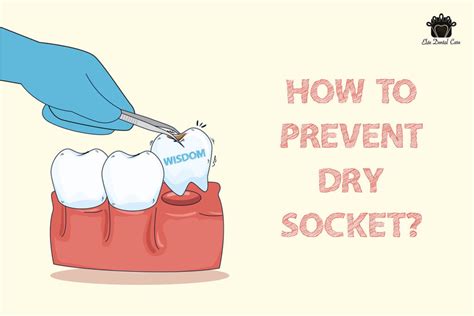Prevent Dry Socket: Master Wisdom Tooth Hole Care
Extracting wisdom teeth is a common procedure, but the recovery process can be surprisingly tricky. One of the most feared complications is dry socket, a painful condition where the blood clot protecting the extraction site dislodges. Understanding how to prevent dry socket is crucial for a smoother recovery. This comprehensive guide will equip you with the knowledge and strategies to minimize your risk and ensure a comfortable healing journey.
What is Dry Socket (Alveolar Osteitis)?
Dry socket, also known as alveolar osteitis, is a painful condition that can occur after a tooth extraction, most commonly a wisdom tooth extraction. It happens when the blood clot that normally forms in the extraction site dislodges or dissolves prematurely. This leaves the underlying bone and nerve endings exposed, causing intense pain, bad breath, and sometimes a foul taste in the mouth. While unpleasant, dry socket is usually treatable. Prevention, however, is far preferable.
How to Prevent Dry Socket After Wisdom Tooth Extraction
The good news is that dry socket is preventable in most cases. By following these crucial post-operative instructions diligently, you significantly reduce your risk:
1. Strictly Follow Your Dentist's Instructions: This is paramount. Your dentist will provide specific instructions tailored to your individual situation, including medication, rinsing techniques, and activity restrictions. Careful adherence is your best defense against dry socket.
2. Gentle Rinsing: Your dentist might recommend a gentle saltwater rinse (1/2 teaspoon of salt dissolved in 8 ounces of warm water) several times a day, starting 24 hours after the extraction. Avoid vigorous rinsing, forceful spitting, or using any commercial mouthwash (unless specifically recommended by your dentist) which can dislodge the blood clot.
3. Avoid Smoking: Smoking significantly increases your risk of dry socket. The suction created by smoking can dislodge the crucial blood clot, delaying healing and increasing pain. Refrain from smoking for at least a week, preferably longer, following your extraction.
4. Careful Diet: Avoid using straws for at least a week after surgery. The suction created can disrupt the healing process. Opt for soft foods like yogurt, applesauce, mashed potatoes, and smoothies for the first few days. Gradually reintroduce more solid foods as your mouth heals. Avoid hot foods and drinks as these can irritate the extraction site.
5. Avoid Alcohol and Caffeine: Alcohol and caffeine can thin the blood, which may interfere with clot formation. It's best to abstain from these for at least 24 hours, and ideally longer.
6. Maintain Good Oral Hygiene: Gentle brushing and flossing around the other teeth is still important, but avoid the extraction site directly.
7. Rest and Manage Pain: Get plenty of rest to allow your body to heal. Take prescribed pain medication as directed to manage discomfort. Over-the-counter pain relievers like ibuprofen can also be helpful, but always check with your dentist first.
8. Keep Your Mouth Clean: This is crucial. Food particles can lead to infection and delay healing. Try to gently rinse your mouth after each meal to dislodge any debris.
What Increases the Risk of Dry Socket?
Several factors increase the likelihood of developing dry socket:
- Smoking: As mentioned, this is a major risk factor.
- Poor Oral Hygiene: Bacteria in the mouth can hinder healing.
- Difficult Extractions: Complex extractions are more likely to lead to complications.
- Birth Control Pills: Some studies suggest a link between birth control pills and an increased risk.
- Previous History of Dry Socket: If you've experienced dry socket before, you're more likely to experience it again.
Symptoms of Dry Socket
Recognizing the symptoms of dry socket is critical for prompt treatment. Common signs include:
- Severe, throbbing pain starting a few days after the extraction, often radiating to the ear or jaw.
- Bad breath or a foul taste in your mouth.
- Visible empty socket (your dentist will confirm this).
- Delayed healing.
What to Do if You Suspect Dry Socket
If you suspect you have a dry socket, contact your dentist or oral surgeon immediately. They will likely clean the socket, pack it with medicated dressing to promote healing, and prescribe pain medication.
By following these preventative measures and seeking prompt medical attention if necessary, you can significantly reduce your risk of experiencing this painful complication and enjoy a smoother recovery after your wisdom tooth extraction. Remember, proactive care is key to a healthy and comfortable healing experience.

